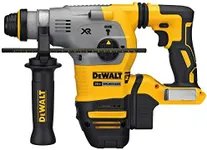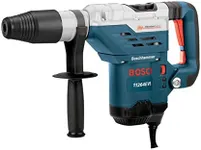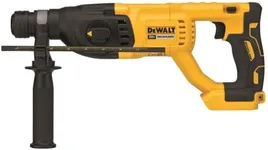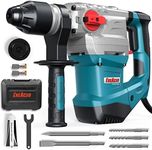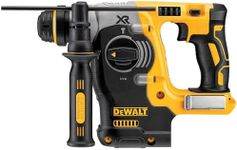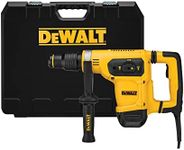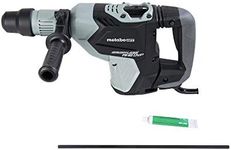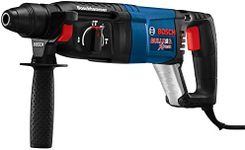Buying Guide for the Best Rotary Hammer Drills
Choosing the right rotary hammer drill can make a big difference in how easily and efficiently you can tackle heavy-duty drilling or chiseling tasks, especially in materials like concrete, brick, or stone. Before you buy, think about the types of projects you plan to do, how often you'll use the tool, and the environments you'll be working in. Understanding the key features will help you match a drill to your needs, ensuring you get a tool that's powerful enough without being unnecessarily bulky or complex.Power (Amperage or Voltage)Power in rotary hammer drills is usually measured in amperage for corded models and voltage for cordless ones. This spec tells you how much force the drill can deliver, which is crucial for tough materials like concrete. Lower power (around 6-8 amps or 18V) is suitable for lighter tasks and occasional use, while higher power (10+ amps or 36V) is better for frequent, heavy-duty work. If you mostly drill into softer materials or do small jobs, a lower-powered drill will be lighter and easier to handle. For regular, demanding tasks, opt for higher power to avoid straining the tool.
Impact Energy (Joules)Impact energy, measured in joules, indicates how much force the drill delivers with each hammer blow. This is important because higher impact energy means faster and more effective drilling in hard materials. Light-duty drills may offer 1-2 joules, suitable for small holes or light chiseling, while heavy-duty models can exceed 5 joules for breaking up thick concrete. Choose a lower impact energy for home repairs and a higher one for construction or renovation work.
Drilling ModesRotary hammer drills often come with different modes: drill only, hammer only, and hammer drill (rotation plus hammering). This versatility lets you use the tool for various tasks, from simple drilling to chiseling. If you need a tool for both drilling and light demolition, look for a model with all three modes. If you only plan to drill, a simpler model may suffice.
Chuck Type (SDS-Plus vs SDS-Max)The chuck type determines what size and type of bits you can use. SDS-Plus chucks are common for lighter, more compact drills and accept smaller bits, making them ideal for most home and light professional use. SDS-Max chucks are larger and designed for heavy-duty work, allowing for bigger bits and more demanding tasks. Pick SDS-Plus for general use and SDS-Max if you expect to do a lot of large-diameter drilling or chiseling.
Weight and ErgonomicsThe weight and design of the drill affect how comfortable it is to use, especially for long periods or overhead work. Lighter drills (under 7 lbs) are easier to handle and better for smaller jobs, while heavier models (over 10 lbs) offer more power but can be tiring to use. Consider your strength and the typical duration of your tasks when choosing the right balance between power and comfort.
Vibration ControlVibration control features help reduce the amount of vibration that reaches your hands and arms, making the tool more comfortable and safer to use over time. If you plan to use the drill frequently or for long sessions, look for models with built-in vibration reduction. For occasional use, this may be less critical.
Corded vs CordlessCorded drills offer consistent power and are ideal for long, demanding jobs where access to electricity is not an issue. Cordless models provide more mobility and are great for working in areas without easy access to outlets, but they rely on battery life. Choose corded for stationary, heavy-duty work and cordless for flexibility and portability.
